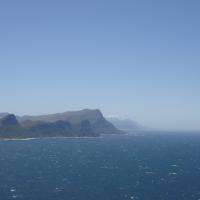Eddies drive section of thermohaline circulation

(Phys.org) -- Giant currents that traverse the world’s oceans may not be as stable as previously thought after researchers found a branch of one of these global currents was powered and steered entirely by eddies, one of the oceans smallest features.
In a recently published study, Centre of Excellence Associate Researcher, Dr Erik Van Sebille, found that a cold and deep current which travels east across the Atlantic from The Americas to South Africa is directly controlled by warm-core Agulhas rings – eddies that form at the Cape of Good Hope and migrate in exactly the opposite direction of the deep current.
The area of the ocean global overturning circulation that is affected is part of the deep branch of the global overturning circulation that flows southward across the Atlantic. The most prominent feature of this southward pathway is a deep current that is attached to the eastern shoreline of the Americas. Around 25S this deep current forks, with the majority of the water continuing its southbound journey and a smaller ribbon veering to the east and South Africa.
Researchers had known for decades about this eastward current, but little was known about what drives it. Using a fine-resolution global ocean circulation model, Van Sebille et al found that the deep eastward flow across the South Atlantic is driven and steered by Agulhas rings.
The authors used simulated floats to track the three-dimensional pathway of the deep, eastward pathway across the South Atlantic and found that this pathway lines up perfectly with the path of the Agulhas rings flowing in the opposite direction. This finding gave the authors a hint as to how the two are connected, and a mathematical expansion of the laws governing the ocean circulation confirmed that the north-westward flowing Agulhas rings at the surface force the deep flow eastward by squeezing it from above.
This finding suggests that when the number of Agulhas rings changes, this might directly affect the deep branch of the global overturning circulation.
More information: Journal of Geophysical Research-Oceans, doi:10.1029/2011JC007684 , 2012.
Provided by ARC Centre of Excellence in Coral Reef Studies














